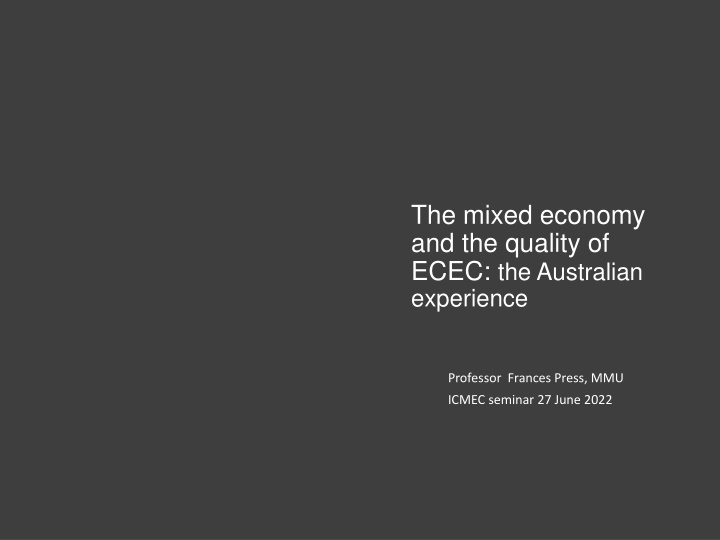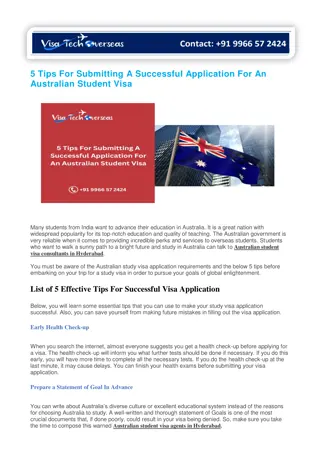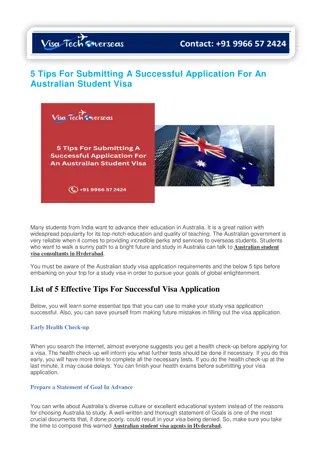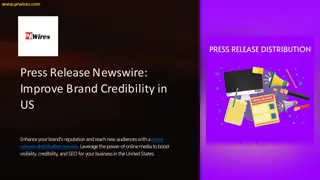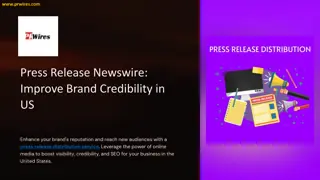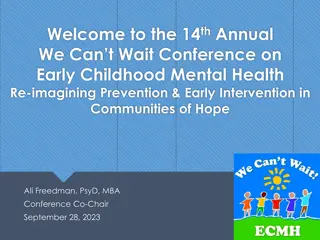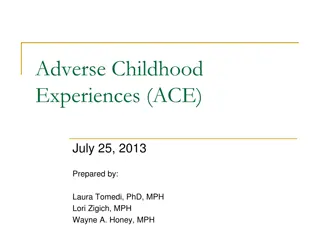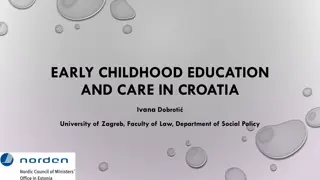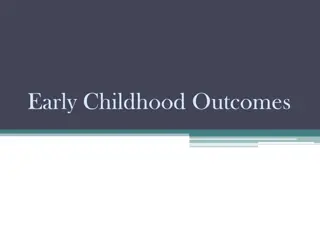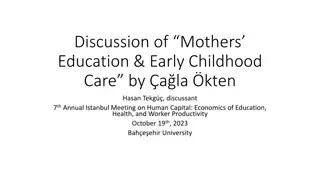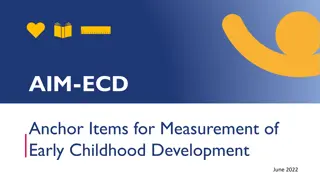Australian Early Childhood Education and Care Quality: Insights from Professor Frances Press
Discussing the quality of Early Childhood Education and Care (ECEC) in Australia, Professor Frances Press delves into the mixed economy model, provider types, assessment criteria, and research outcomes. The presentation covers areas such as educational programs, health and safety, staffing, relationships with children, and governance. Collaborative studies and PhD research projects shed light on risk-taking, leadership, and children's rights in exemplary ECEC services.
Download Presentation

Please find below an Image/Link to download the presentation.
The content on the website is provided AS IS for your information and personal use only. It may not be sold, licensed, or shared on other websites without obtaining consent from the author.If you encounter any issues during the download, it is possible that the publisher has removed the file from their server.
You are allowed to download the files provided on this website for personal or commercial use, subject to the condition that they are used lawfully. All files are the property of their respective owners.
The content on the website is provided AS IS for your information and personal use only. It may not be sold, licensed, or shared on other websites without obtaining consent from the author.
E N D
Presentation Transcript
The mixed economy and the quality of ECEC: the Australian experience Professor Frances Press, MMU ICMEC seminar 27 June 2022
Australian ECEC Composition Access Staffing Regulation and Accreditation Context Context
Private for profit Not for profit community managed Not for profit other organisations State/Territory and Local Government 7% State/Territory government schools Independent schools Catholic schools 51% 20% Provider Provider management management type type 13% 4% 3% 1%
ACECQA (Australian Childrens Education and Care Quality Authority) Data Data EEC@W Study
Services are assessed (internal and external review) against seven areas: educational program and practice; children's health and safety; physical environment; staffing arrangements; Assessed Assessed quality in quality in Australian Australian ECEC ECEC (ACECQA) relationships with children; collaborative partnerships with families and communities; leadership and governance. Ratings Excellent; Exceeding the National Quality Standard; meeting the National Quality Standard; working towards National Quality Standard; or significant improvement required.
Research was conducted with services with an overall rating of Exceeding NQS, and an exceeding rating in all eligible areas Attached PhD Studies: Mandy Cooke s - educators conceptualisation of risk taking in exemplary services, EECE@W EECE@W Study Study ARC LP160100532 Leanne Gibbs - leading and leadership in exemplary services Robbie Warren - educators conceptualisation and enactment of children s rights Research Team: Linda Harrison, Sandie Wong & Tamara Cumming, Macquarie University (previously from Charles Sturt University); Megan Gibson, Queensland University of Technology; Frances Press, Manchester Metropolitan University UK; Sharon Ryan, Rutgers, USA Partner organisations:Community Early Learning Australia; Child Australia; Cre che and Kindergarten Association (QLD); KU Children s Services; Independent Education Union (NSW and QLD, ACT & NT branches); Inner West Council; United Voice
The The neo neo- - liberal liberal project project Enter the market The struggle around quality
The Discursive shift Three Three streams streams Can the market be tamed? What s the problem?
Commodification of a public good Pitching to parental aspiration The The Discursive Discursive Shift Shift Bifurcation (SES and School capture)
we are the provider-of-choice for parents seeking the very best educational start for their children endless possibilities for every child take advantage of the windows of opportunity in these years to give your child the best start toward a lifetime of learning Pitching to Pitching to parental parental aspiration aspiration a platinum cutting edge child care operator with advanced educational programming in early childhood menu designed by [a] leading Paediatric Dietitian and Nutritionist and prepared daily by a qualified Chef Performing arts studios, specialised sports programmes designed by sports science physiologists, and state-of-the-art facilities
Non-profit services more likely than for-profit services to be rated as exceeding the quality standard for their educational programme local government-run services (46%), community-managed non-profits (35%) other non-profits (25%) Marketing Marketing vs vs Reality Reality Only 16% of private for-profit services were rated as exceeding the national quality standard for their educational programme (ACECQA 2016b: 19).
87% of services now meet the standard up from 57% in 2013 Widespread acceptance of the system Taming Taming the the Market? Market? Data freely available NQF Snapshot Q1 2022 FINAL.pdf (acecqa.gov.au)
Provider type ACECQA overall rating 2016 No. of centres rated as Working towards the National Quality Standard No. of centres rated as Meeting the National Quality Standard No. of centres rated Exceeding National Quality Standard For-profit listed company (150 total) Company brand (10 total) 6 3 0 For-profit listed company (>450 total) Brand centre (30 total) 9 8 2 For-profit unlisted company (Estimated 25 centres) 2 7 11 Non-profit (Estimated 25 centres)* 2 3 13 Non-profit (86 centres total, 25 centres reviewed) 2 6 17
*running a sustainable childcare business means making decisions that appear uneconomic. (AFR 2015)
23 % of services in the most disadvantaged areas rated as Working Towards NQS 18 % of services in the most advantaged areas (SEIFA quintile 5) rated as Working Towards NQS Who gets Who gets what? what? 26 % rated as Exceeding the NQS in the most disadvantaged areas (SEIFA quintile 1) 36 % rated as Exceeding NQS services in the most advantaged areas (SEIFA quintile 5) (ACECQA, June 2020)
But its a complex story Working towards 4 Meeting Exceeding Peppermint Grove (WA) Mosman (NSW) Nedlands (WA) 2 9 8 2 2 2 9
Above baseline staffing and conditions What What makes a makes a difference? difference? Support for professional development Strong philosophical underpinnings
Purpose is a crucial but obscured aspect of quality that is woven throughout the structural and process factors that are often the focus of quality research. Multiple purposes may be evident across educator practices, and are evident at different levels of practice, for example at the macro-level of the purpose of education; the philosophical orientation of each site of practice (the service itself); and the micro-level intentions behind educators actions . Purpose Purpose (Press, Gibbs, Cooke & Warren, 2021)
Early childhood educators ..will reinforce in their daily practice the principles laid out in the United Nations Convention on the Rights of the Child (the Convention). The Convention states that all children have the right to an education that lays a foundation for the rest of their lives, maximises their ability, and respects their family, cultural and other identities and languages. The Convention also recognises children s right to play and be active participants in all matters affecting their lives. (p. 5) Early Years Early Years Learning Learning Framework Framework The EYLF calls upon educators to: challenge practices that contribute to inequities and make curriculum decisions that promote inclusion and participation of all children. recognise that diversity contributes to the richness of our society and provides a valid evidence base about ways of knowing. For Australia it also includes promoting greater understanding of Aboriginal and Torres Strait Islander ways of knowing and being. think critically about opportunities and dilemmas that can arise from diversity and take action to redress unfairness. [Educators] provide opportunities to learn about similarities and difference and about interdependence and how we can learn to live together (p. 14).
We recognise that that diversity contributes to the richness of our society and provides opportunities for different ways of knowing. We also believe that our curriculum should reflect and promote a better understanding of Aboriginal and Torres Strait Islander ways of knowing and being. As a community of learners it is our responsibility to think critically about opportunities and dilemmas that can arise from diversity and take action to redress unfairness/antibias so that we live together in harmony. Social Justice Social Justice orientations orientations
Its become engrained in me; this idea of social justice, this idea of equity, this idea of actually we owe it to these children and these families. (Theresa, cited in Gibbs, 2020) There are these little sparks in the way I manage or lead that always drive my practice or my principles as well. They are very much a values orientation, which is around equity and social justice. (Isla, cited in Gibbs, 2020) That s what families and communities deserve. I will go that extra mile for you, and you don t need to give me anything. I m going to do it because that s what you deserve. That s your right as a human isn t it? (Theresa) (Gibbs, 2020)
How is the problem named and framed Supply Market collapse Economic viability vs social impact Policy impacts So ..is So ..is there a there a problem? problem?
